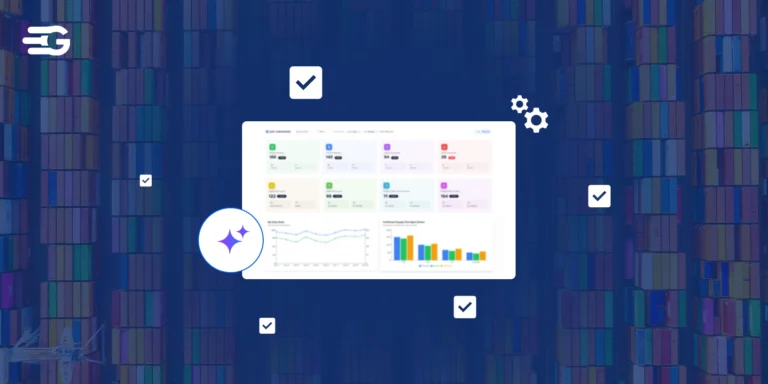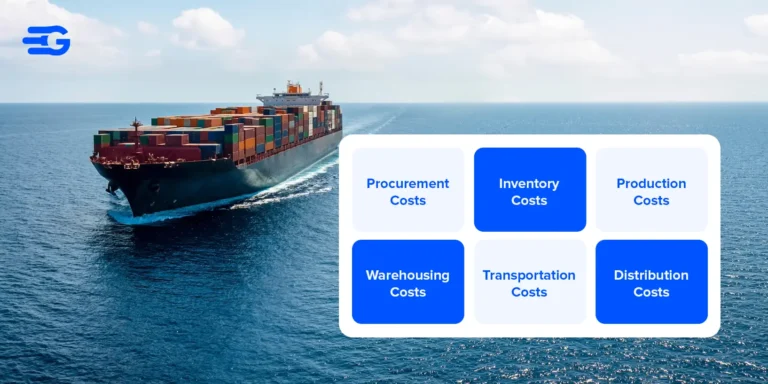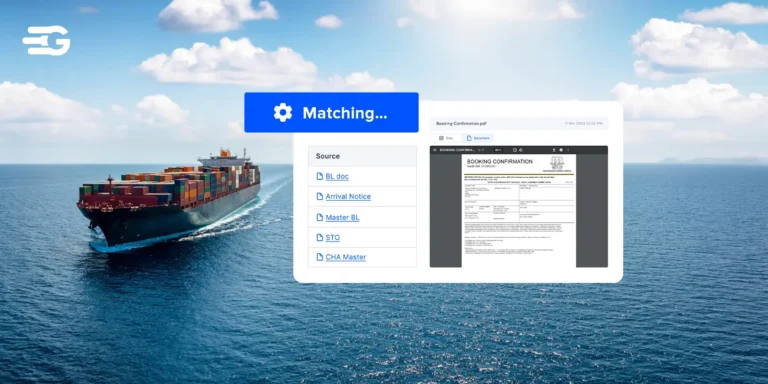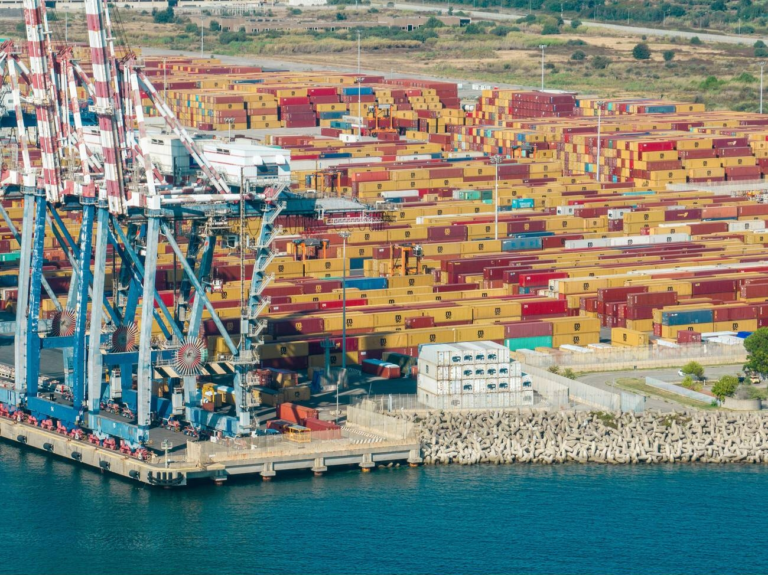The Advantages of Transportation Management Systems
Juggling quotes, tracking packages, and praying for on-time deliveries, the shipping struggle is real. We get it. Spreadsheets can turn into tangled webs, and chasing down carrier rates feels like an endless game of whack-a-mole.
But what if there was a way to streamline your shipping process, slash costs, and gain real-time visibility into your deliveries
TMSs are the ultimate shipping companions. It automates tedious tasks, helps you find the best carrier deals, and keeps you informed every step of the way. You have been missing out on an essential tool – data-driven, efficient, and ready to transform your shipping operation from frantic to fantastic. Let’s dive in and see how a TMS can be your key to shipping success.
What is the scope of Transportation Management Systems?
TMS acts as a bird’s-eye view of your entire supply chain, pinpointing the exact location of every shipment and proactively managing potential delays. A robust TMS goes beyond just visibility; it offers a comprehensive suite of features designed to streamline operations and empower informed decision-making. Let’s delve deeper into how a TMS empowers businesses with
Real-Time Tracking: No more scrambling for updates. A TMS seamlessly integrates with carrier systems and GPS technology, providing a real-time window into your shipment’s journey. This allows you to proactively manage potential delays, reroute shipments if necessary, and keep your customers informed with accurate delivery expectations.
Centralized Data Hub: Streamline information flow and eliminate data silos. Transportation management systems act as a central repository, consolidating data from diverse sources such as carrier invoices, shipment details, and route information. This eliminates the need for time-consuming manual data entry and ensures data accuracy and accessibility for all stakeholders involved. Streamlined information flow empowers collaboration and faster decision-making across teams. To learn what is Transportation Management System and how they can benefit your operations, explore our detailed guide.
Automated Alerts and Proactive Problem-Solving: Never miss a critical update. A TMS can be configured to send automated alerts and notifications for crucial events – be it a shipment delay, a potential disruption, or upcoming delivery windows. This empowers you to react quickly and take proactive measures to address any issues before they snowball.
Optimized Routes, Reduced Costs: Some advanced TMS solutions offer sophisticated route optimization features. These features consider factors like traffic patterns, weather conditions, and fuel efficiency when planning delivery routes. The result? Optimized routes that minimize travel times, reduce fuel consumption, and ultimately, bring down your transportation costs and enable a green and sustainable supply chain.
Given that Transportation Management Systems enables visibility in the digital age, what is its value addition singularly?
Its true value lies in the singular power of automation. A supply chain management system that takes care of tedious and time-consuming tasks behind the scenes as well as shows you what is happening. This is what a TMS does.
Here’s how automation within a TMS brings a multitude of benefits:
Effortless Efficiency: Repetitive tasks like carrier selection, route planning, and freight quote requests become a breeze. The TMS automates these processes, freeing up your employees’ valuable time and resources. They can now focus on higher-level tasks like strategic partnerships, negotiation, and customer relationship management.
Smarter Carrier Management: No more juggling spreadsheets. A TMS acts as your central hub for carrier management. Compare rates, negotiate contracts, and track carrier performance – all within a single platform. This empowers you to choose the most cost-effective and efficient carriers based on data-driven insights.
Optimized Deliveries, Reduced Costs: Gone are the days of inefficient routes and empty miles. A TMS analyzes historical data and real-time conditions to optimize delivery routes. This allows for:
- Multi-stop planning: Plan efficient routes that hit multiple stops in a single trip, saving time and fuel.
- Shipment consolidation: Combine smaller shipments into larger ones, maximizing trailer capacity and reducing transportation costs.
- Minimization of empty miles: TMS helps you avoid sending out partially filled trucks, ensuring optimal use of resources and reducing fuel consumption.
Seamless Communication: A TMS fosters seamless communication throughout the supply chain. From carriers and warehouses to customers, everyone is on the same page. Real-time updates and automated notifications allow for proactive communication regarding potential delays or changes, leading to improved customer satisfaction.
Automated Documentation: Say goodbye to manual paperwork. A transportation management systems automate the generation of shipping documents, packing lists, and invoices. This eliminates errors and saves valuable time, allowing your team to focus on more strategic initiatives.
In the context of cost saving, TMS offers significant cost-saving advantages for businesses. It offers a powerful suite of tools to streamline your supply chain and reduce costs. Automating tasks like carrier negotiation, route optimization, and shipment consolidation, helps you secure better rates and minimize fuel consumption.
It also reduces errors by eliminating manual data entry, leading to accurate invoices and avoiding unnecessary charges. Furthermore, real-time tracking provides valuable insights for optimizing inventory levels, minimizing storage costs, and preventing stockouts.
Alongside it tackles your transportation expenses from multiple angles. It empowers you to negotiate better rates with carriers by aggregating your shipping volume and automating the negotiation process. This translates to significant cost savings. Additionally, the system acts as a route optimization wizard, analyzing factors like traffic and fuel costs to design the most efficient delivery routes, minimizing fuel consumption.
Moreover, the TMS functions as a consolidation champion, identifying opportunities to combine smaller shipments into larger ones. This reduces the number of trucks needed, lowering overall transportation expenses and minimizing handling costs associated with multiple shipments.
Besides the action application, manual data entry in logistics is a common culprit for errors, leading to typos, inaccurate shipment details, and costly delays due to incorrect documentation. A TMS tackles this issue head-on by automating tasks like order entry, route planning, freight bill auditing, and shipping documentation.
This not only eliminates human error and ensures data consistency throughout the process, but also frees up valuable employee time for more strategic work and improved customer service. By automating these tasks, a TMS offers a double benefit: reduced errors and associated costs, alongside potential labor cost savings.
In terms of costs, TMS enables an impeccable framework, where saving is automated innately in each nodal point of transport.
Now taking a 180 from here, at the customer’s does it add any value?
In today’s competitive landscape, exceptional customer service is paramount. A TMS plays a crucial role in enhancing customer satisfaction and retention through improved delivery management. Real-time shipment tracking empowers customers to be informed about the exact location and estimated arrival time of their orders. This transparency builds trust and reduces the number of customer inquiries about shipment status.
But a TMS goes beyond just keeping customers informed. TMS offers a comprehensive analysis of data and traffic patterns, that helps anticipate potential delays proactively, thus minimizing their impact and ensuring on-time deliveries, reducing customer dissatisfaction.
Okay, TMS offers feasibility and control over the supply chain operations. But doesn’t that come with a cost in terms of the carbon footprint?
Sustainability is a growing concern for businesses across all industries. Fortunately, a TMS can contribute to your eco-friendly efforts by optimizing routes and loads for fuel efficiency. By adopting a TMS, you can demonstrate your commitment to sustainability and potentially appeal to customers who prioritize eco-friendly practices.
By optimizing delivery routes and minimizing travel distances with unnecessary stops, a transportation management systems significantly reduce fuel consumption. This translates to a smaller carbon footprint and a more sustainable operation. But the benefits of the green practice to supply chain management don’t stop there. A TMS also helps you maximize truckload capacity by efficiently combining shipments.
This means fewer trucks on the road, leading to even lower overall fuel consumption and a reduced environmental impact.
Thus, it is safe to infer that TMS isn’t just good for your wallet, it’s good for the planet too.
You’ve seen the impressive benefits a TMS offers, from cost reduction to improved customer service and environmental advantages.
But a critical question remains: how does a single system achieve such a wide range of positive impacts?
The answer lies in the core strengths of a TMS – its adaptability and integration capabilities, coupled with its role in strategic planning.
Modern transportation management systems solutions are designed to seamlessly integrate with your existing business ecosystem. This means smooth data flow between your accounting software, warehouse management systems, and even customer relationship management platforms. By eliminating data silos, a TMS ensures everyone across your operation has a clear picture and can work together efficiently.
Furthermore, a TMS offers scalability and flexibility. Whether you’re a small startup or a large corporation, you can tailor the system to your specific needs. With features that can be customized to your unique business model, you’re guaranteed to maximize the ROI on your TMS investment.
But a TMS goes beyond streamlining day-to-day operations. It acts as a powerful data collection and analysis tool. By gathering vast amounts of information on shipments, routes, carrier performance, and costs, a TMS empowers you to make data-driven decisions. This data becomes the foundation for strategic planning and network optimization, ultimately enhancing your overall efficiency and profitability.
Alongside, historical data and trend analysis allow for improved forecasting and planning, ensuring you have the resources in place to meet customer demand and avoid stockouts. With a TMS, you gain a powerful tool for proactive management and strategic decision-making across your entire supply chain.
A recent survey by Descartes revealed that advanced truckload tracking (nearly half at 47%) was the most widely adopted innovation among supply chain professionals. However, a surprising gap exists between adoption and integration, as only 27% reported having real-time shipment tracking functionality within their TMS.
Interestingly, the survey also found a prioritization difference. While transportation management systems were the top focus for carriers and logistics providers, manufacturers, retailers, and distributors ranked it as the fourth most important investment.
This trend seems to be shifting as supply chain visibility gains traction. Another survey `by Kenco indicates that 65% of supply chain leaders plan to invest in visibility-enhancing technologies within the next year.
This aligns with the Descartes survey’s finding that visibility technologies are maturing rapidly, with 35% to 43% of respondents across various transportation modes reporting pilot or partial deployments. Notably, the Descartes survey ranked supply chain visibility as the fourth most crucial digitization effort at 43%.
There’s a disconnect in the world of transportation management. While advanced tracking technologies are gaining widespread adoption (nearly half of supply chain professionals utilize them!), a surprising gap exists – only 27% integrate real-time tracking functionality within their TMS. This highlights a missed opportunity!
Here’s where Transportation Management Systems (TMS) come into play. Interestingly, a recent survey found carriers and logistics providers prioritize TMS as their top investment, while manufacturers and distributors rank it fourth. This could be due to a lack of understanding of the full potential a TMS offers.
The tide seems to be turning, though. Supply chain visibility is rapidly becoming a top priority. Over 65% of supply chain leaders plan to invest in visibility-enhancing technologies in the coming year. This aligns with the growing adoption of visibility technologies in pilot or partial deployments across various transportation modes, Notably, supply chain visibility itself is ranked as the fourth most crucial digitization effort.
This all points to a crucial truth: a powerful TMS is the key to unlocking the true potential of supply chain visibility.
GoComet’s TMS services offer a comprehensive TMS solution designed to bridge this gap. An integration of advanced real-time tracking with features like route optimization, carrier negotiation, and automated data management. This translates to a holistic view of your supply chain, allowing you to:
- Reduce transportation costs: Negotiate better rates, optimize routes, and consolidate shipments.
- Improve efficiency: Automate tasks, eliminate errors, and streamline communication.
- Enhance customer service: Provide real-time shipment tracking and proactive exception management.
- Boost sustainability: Minimize fuel consumption and optimize truckload capacity.
- Gain data-driven insights: Make informed decisions based on real-time data and historical trends.
In conclusion, robust Transportation management systems are not nice to have, but it’s a game-changer. You can gain a powerful competitive edge in today’s dynamic logistics landscape by integrating visibility technologies with a comprehensive TMS solution like GoComet’s TMS services. Embrace the power of a connected supply chain and unlock the full potential of your transportation network.





